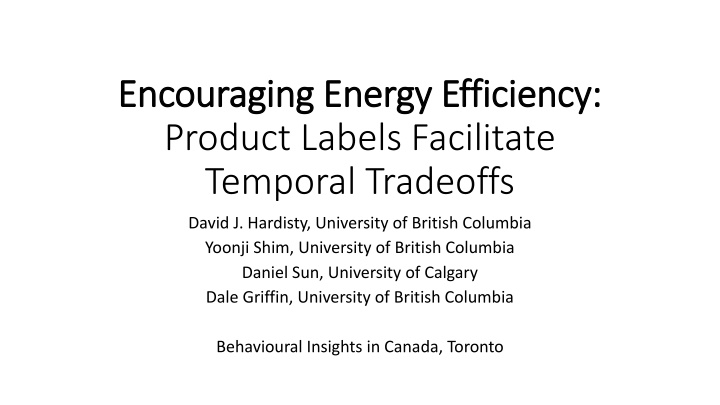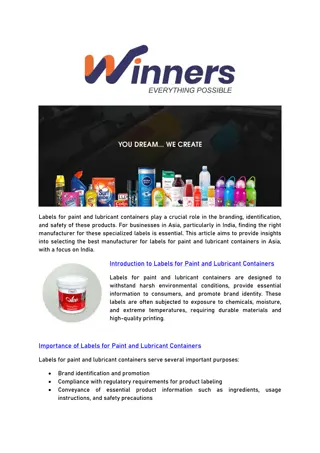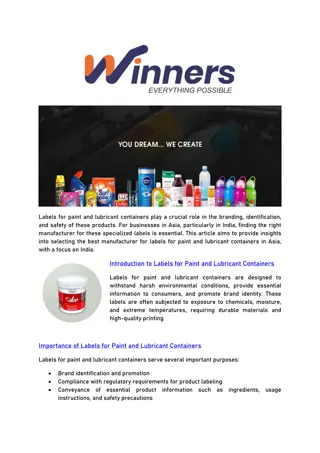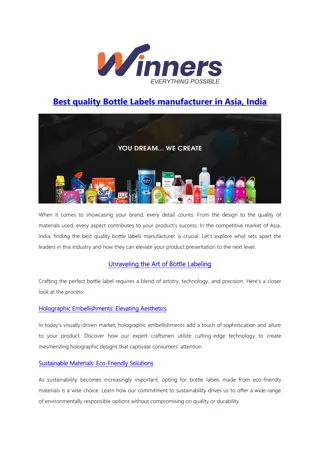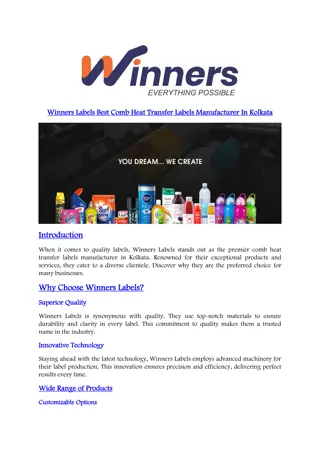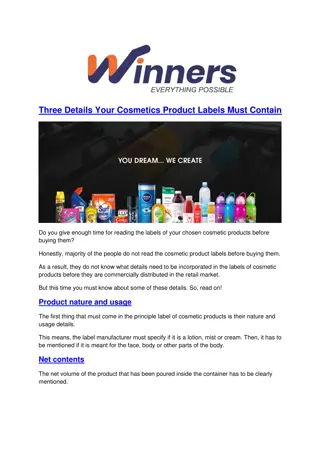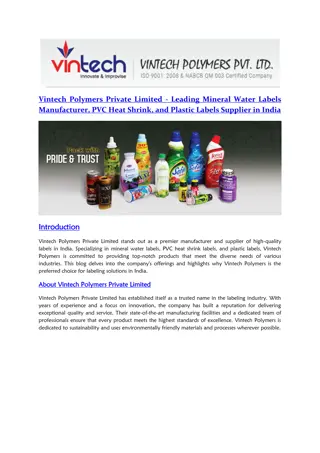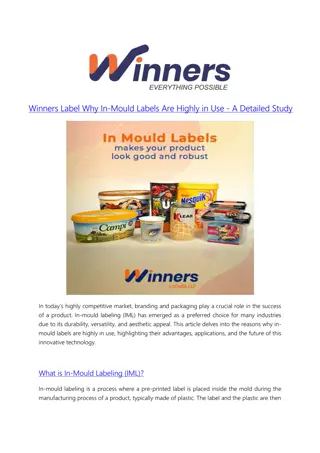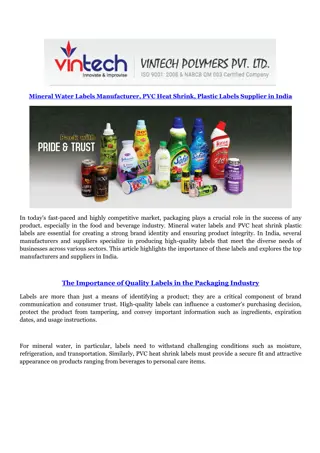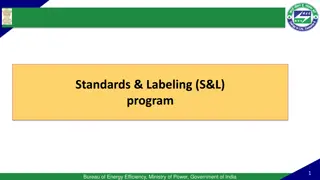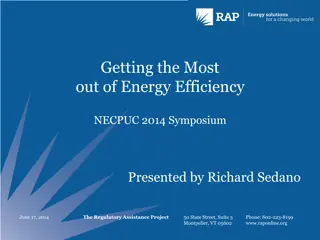Enhancing Energy Efficiency through Product Labels and Behavioral Insights
Encouraging energy efficiency through innovative product labels that facilitate temporal trade-offs and tap into consumers' goal to minimize long-term costs. Studies show significant impact on energy-efficient choices and purchasing behavior. Effective strategies highlighted using real-life experiments and results.
Uploaded on Sep 13, 2024 | 3 Views
Download Presentation

Please find below an Image/Link to download the presentation.
The content on the website is provided AS IS for your information and personal use only. It may not be sold, licensed, or shared on other websites without obtaining consent from the author.If you encounter any issues during the download, it is possible that the publisher has removed the file from their server.
You are allowed to download the files provided on this website for personal or commercial use, subject to the condition that they are used lawfully. All files are the property of their respective owners.
The content on the website is provided AS IS for your information and personal use only. It may not be sold, licensed, or shared on other websites without obtaining consent from the author.
E N D
Presentation Transcript
Encouraging Energy Efficiency: Encouraging Energy Efficiency: Product Labels Facilitate Temporal Tradeoffs David J. Hardisty, University of British Columbia Yoonji Shim, University of British Columbia Daniel Sun, University of Calgary Dale Griffin, University of British Columbia Behavioural Insights in Canada, Toronto
Our Nudge: 10-year energy cost Consumer don t know? Or don t care? Why does it work? Multiple reasons, but in particular: Consumers have a latent goal to minimize long term dollar costs 10-year energy cost labels activate this goal, leading to more energy efficient choices
Study 1: MTurk Experiment (N = 1,155) Price: $4.29 [10-year energy cost:] [$207] [1837 kWh] [28% less] [10-year energy saved:] [$81] [718 kWh] [28% more] Lumens: 1490 Watts: 72 Number of bulbs: 2 Price: $12.99 [10-year energy cost:] [$66] [586 kWh] [77% less] [10-year energy saved:] [$222] [1969 kwh] [77% more] Lumens: 1600 Watts: 23 Number of bulbs: 2
Study 1: Results 1 0.9 Energy efficient choice 0.8 0.7 proportion 0.6 0.5 0.4 0.3 0.2 0.1 0 Control $ Cost kWh Cost % Cost $ Saved kWh Saved % Saved
Study 2: Methods Run in 5 drug stores over 6 weeks Two types of lightbulbs on store endcaps: 72w Halogen bulb (2-pack) for $4.29 23w CFL bulb (2-pack) for $12.99 Labels switched once per week, counterbalanced across stores DV: proportion of CFLs purchased
Study 2: Results 12% chose efficient option (n = 26) 48% chose efficient option (n = 29)
